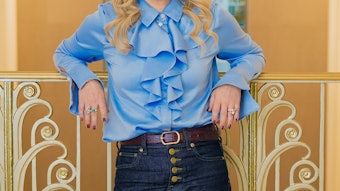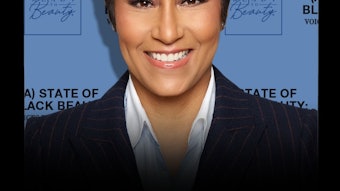Do you know what your consumer will look like in 2013? From an efficacy perspective, what will she need from her beauty products? How will your brand speak to her most effectively? If you think she will be the consumer she’s always been (Caucasian with traditional hair needs), you’re in for a surprise. More than likely, your beauty consumer will be African-American or Hispanic—the groups the beauty industry and country have typically labeled “ethnic.”
The ethnic-specific beauty market has experienced a growth surge. Annual retail sales have increased to nearly $3 billion in the U.S., according to a study by Packaged Facts, a leading publisher of market research in the consumer packaged goods sector, and this indicates an even greater potential for brand marketers. By the end of 2010, ethnic consumers will account for more than 30% of the U.S. population, with a combined spending power in excess of $4.2 trillion by 2013. Traditionally within the U.S., ethnic hair care products represent a market compiled of niche brands specifically designed to address the needs of a smaller demographic, mostly described as African-American or Hispanic. However, the beauty industry is now seeing more ethnic hair care products heading away from niche and into mainstream via increased multicultural branding and inclusive product strategies.
Different Markets, Different Needs
The most notable challenge this beauty consumer continues to face is finding products to address her specific needs. By addressing the unmet needs of this growing group of consumers, brand marketers can uncover substantial opportunities to further innovate both in brand strategy and product development, enabling beauty brands to reach out and communicate directly with underserved consumers.
According to a 2009 study by the General Merchandise Distributors Council, African-Americans make up 13% of the U.S. population, but account for one-third of hair care sales. Similarly, according to global research firm Mintel, Hispanic consumers continue to exhibit higher consumption rates for personal care products, including hair care, and are even outspending non-Hispanics. The importance of hair maintenance and its relationship to beauty within the black and Hispanic communities in the U.S. is a tradition often instilled at an early age, and can be associated with a sense of community and womanly rites of passage. Both groups enjoy the “beauty experience,” opting for products that incorporate ingredients to stimulate the senses, such as fragrance and color, as well as products that deliver a more holistically experiential result. African-American women and Latinas view hair as a form of expression and a statement of personal style, and seek out products to address the specific needs associated with varying hair types and textures, in addition to products that help them achieve a certain style. Because women in both of these groups tend to change hairstyles frequently, there is an increased need for styling products that work with their hair types.
African-American hair can be prone to more damage due to the shape of the hair follicle and its high degree of curliness. This natural fragility is often accelerated by the frequent use of straightening products and appliances, a practice used by 70–80% of African-American women, often beginning as a monthly ritual as early as the age of 5. Straightening hair with alkaline cream relaxers damages hair bonds permanently, leading to hair fiber loss of 40–60%. Many African-American women report issues such as thinning hair, baldness and scalp irritation. Therefore, in their daily regimens, they tend to look for products that address the needs associated with extensively damaged hair, including damage protection and conditioning. Recently, more black women have been embracing natural products that either straighten or enhance the natural texture of curly hair, rejecting the chemicals found in many traditional relaxers.
Within the U.S. alone, Hispanic and Latino populations draw from 25 different countries, accounting for a variety of hair textures and issues associated with naturally curly, dry and easily damaged hair. This high degree of variety has long confused many beauty brand marketers, leaving them unsure how to communicate with such a diverse group. For years, Hispanic consumers have exhibited preferences toward either African-American–specific brands or Caucasian products, depending on hair texture, even in lieu of products specifically developed for them. However, with rising Hispanic populations, the hair care needs and concerns of this group have been recognized by brands that understand the potential of communicating to and showing them that they understand this market’s particular challenges.
For example, while Ouidad is not a Latino-specific brand, the product addresses needs associated with curly hair and recognizes the potential of communicating directly with Hispanic consumers. By using Latina models in its advertising and incorporating values such as family, community, personal style and the importance of feeling beautiful into their marketing campaigns, Ouidad has become a favorite across hair types for Hispanic consumers. Mainstream brands such as Pantene Pro-V and Sunsilk also have achieved a good response from Hispanic consumers by incorporating Spanish language instructions that address common Hispanic hair needs on to their shampoo and conditioner packaging.
What to Be Watching
With the recession, many consumers limited trips to the salon, and more women of color are starting to incorporate at-home products into their beauty regimen as a cost-saving measure. Ethnic consumers, more increasingly than the general population, are purchasing natural and organic products and looking for more natural alternatives to chemical hair relaxers.
Education around ingredients and choosing effective, less abrasive products also is increasing in popularity with ethnic consumers. Within the ethnic beauty market, women are celebrating their own hair textures, embracing looks that reflect natural curls and soft styles. Products such as Carol’s Daughter, a line of natural products started out of Lisa Price’s Brooklyn kitchen in 1993, appeal to both black and Hispanic consumers, and can now be found at online retailers such as Sephora and HSN, as well as at beauty salons. Curls, a company that carries products to enhance natural curls, grossed nearly $3 million in sales in 2009, and recently altered its marketing strategy to invite anyone, regardless of ethnicity, to try its products. The natural look requires a greater awareness about one’s own hair, watching for varying degrees of curl and texture that might affect choices in styling. It also encourages greater experimentation in order to find products that complement and enhance natural texture.
According to Packaged Facts, ethnic consumers are not necessarily loyal to products specifically formulated for and marketed to them. These findings show more money is actually spent on general market products, with this consumer more inclined to spend on a product that addresses her specific needs, whether that is dryness/deep conditioning, damage protection, manageability or something else. Clearly, product performance and benefit is the purchase trigger for this group. One mainstream beauty brand that has listened to ethnic consumers and successfully marketed to these consumers is Pantene by Procter & Gamble. This brand has worked to create a relationship with both Hispanics and African-Americans. Pantene Pro-V launched Extra Straight/Extra Liso to address Hispanic consumers’ concerns with thoroughly cleaning hair while, at the same time, achieving the soft and straight look. Similarly, the brand also launched Relaxed and Natural, which addressed the specific hair needs of African-American women. Pantene Nature Fusion, Beautiful Lengths and Curls Collections were created to target issues such as hydration, luster and damage protection, all of which affect these two consumer groups, as well as the general market. Of note, all Pantene products are shelved together in the mainstream hair care aisle.
Continuing Relevance
Hair care continues to dominate the ethnic beauty market, owning 56% of ethnic-specific sales in 2009. However, these rising sales figures do not reflect satisfaction within the market. In fact, they seem to indicate the opposite. There is little satisfaction with hair care and beauty products. Ethnic consumers are more likely to purchase many different products in an effort to find one that is effective. According to the Essence Smart Beauty Panel, women of color want a brand they can trust, that reflects their own personal style, offers high-quality ingredients and actually works to address their specific needs.
In 2015, ethnic consumers will account for more than 120 million people in the U.S., and brand marketers must anticipate and embrace the needs and changing dynamic of this beauty consumer to be successful. This will require a more intimate understanding of exactly who this consumer is, how she thinks, what is important to her in terms of values and community, and how that relates to her hair care regimen. Once brand marketers understand who this consumer is, they can begin to shape a product vitally relevant to her life.
Liz Grubow is vice president and group creative director of LPK Beauty. In her 20-plus-year career, Grubow has helped develop and manage brand identity programs for some of the world’s most successful beauty brands—including Pantene, Olay, MAX Factor International and Cover Girl.
Elle Morris is the vice president and general manager of LPK Beauty, overseeing its general business management and serving as chief customer officer. She provides strategic oversight on businesses in the categories of hair care, feminine care and beauty. Morris has worked with partners in North America, Latin America, Asia and Europe to develop an understanding of beauty’s power across cultures.











